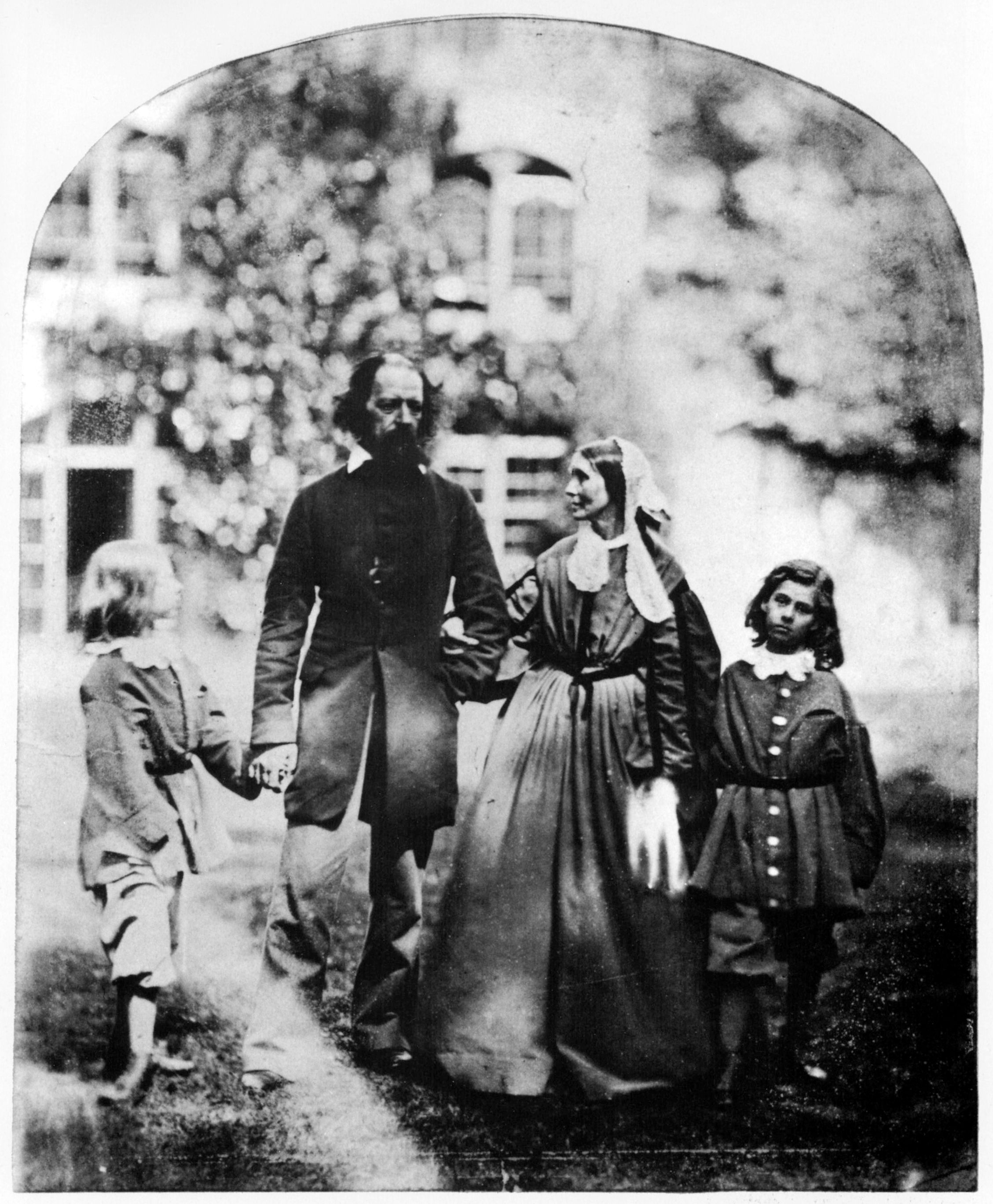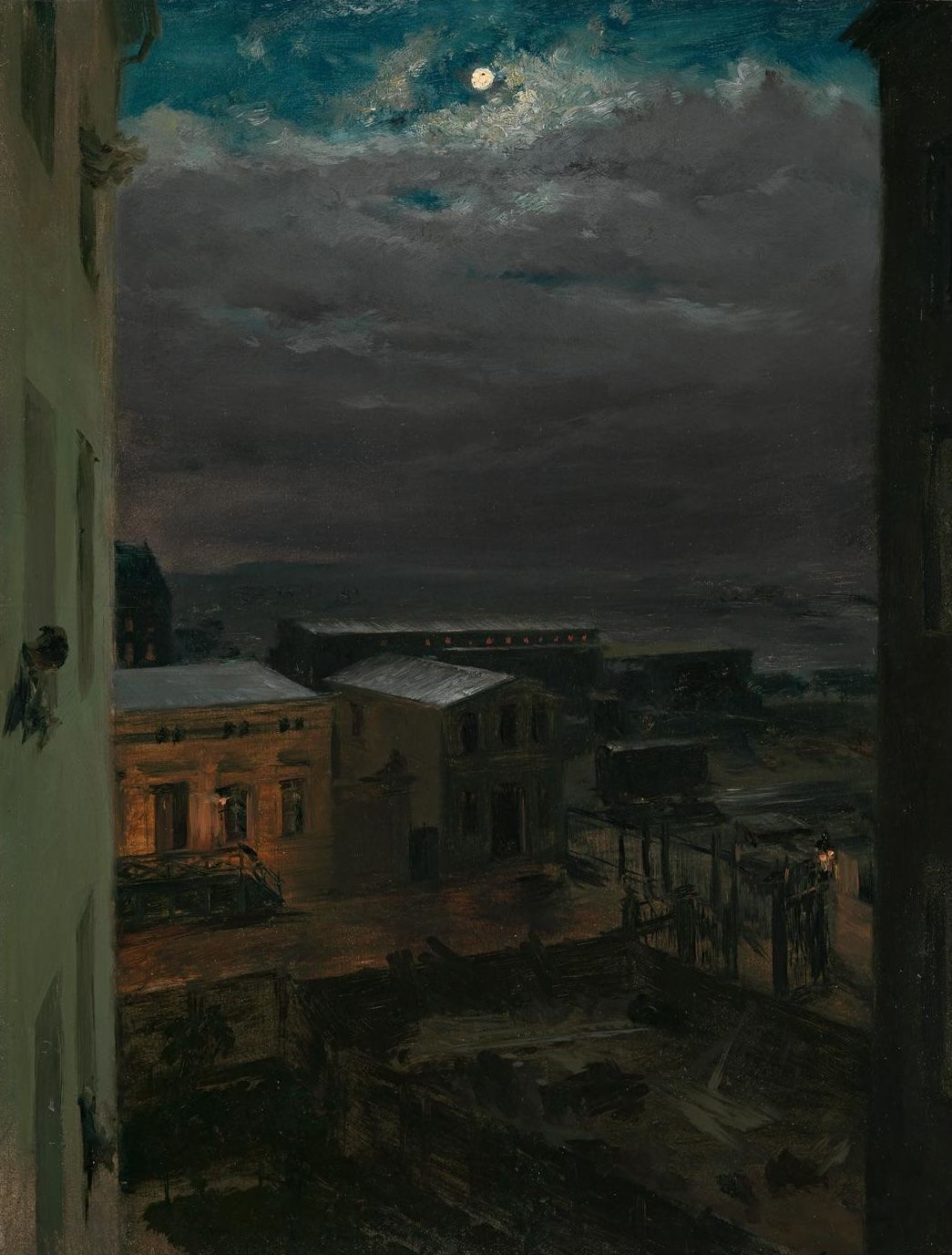Ekfraser

Från Helen Garners The Children's Bach:
Dexter found, in a magazine, a photograph of the poet Tennyson, his wife and their two sons walking in the garden of their house on the Isle of Wight. To the modern eye it is a shocking picture: they are all, with the exception of the great man himself, bundled up in such enormous, incapcitating garments. Eye-line: Tennyson looks into the middle distance. His wife, holding his arm and standing very close to his side, gazes up into his face. One boy holds his father's hand and looks up at him. The other boy holds his mother's, and looks into the camera with a weak, rueful expression. Behind them, out of focus, twinkles the windy foliage of a great garden. Their shadows fall across the lawn: they have just taken a step. Tennyson's hands are large square paws, held up awkwardly at stomach level. His wife's face is gaunt and her eyes are set in deep sockets. It is a photo of a family. The wind puffs out the huge stiff curved sleeve of the woman's dress, and brushes back off his forehead the long hair of the father's boy who is turned towards the drama of his parents' faces; though he is holding his father's hand, he is separate from the group, and light shows between his tightly buttoned torso and his father's leg.

Från Kirsty Bells The Undercurrents: A Story of Berlin:
An early painting by Adolph Menzel, View over Anhalter Bahnhof by Moonlight, looks out of a third-floor window, along the side flank of a neighboring house and down into the shadowy yard of the railway station. The rail yard and its heavy machinery are cast in darkness, while ghostly moonlight glances white on the tiled roofs and façade of the railway buildings center left. The rest of the picture is dark cloud-strewn sky, dimly illuminated by the small disc of a moon. When Menzel made this painting in 1846, the Anhalter Bahnhof was still a simple rectilinear structure, Built just after the first railway lines had arrived triumphantly in Berlin. Anhalter Bahnhof and the nearby Potsdamer Bahnhof were the city's first railway stations. The Potsdamer Bahnhof's tracks lead straight west towards the kaiser's residence in Potsdam, while those departing the Anhalter Bahnhof headed southwest to the Duchies of Anhalt.
- ← Tidigare
🔗 Veckans länkar - v. 6 - Nästa →
Mer Menzel